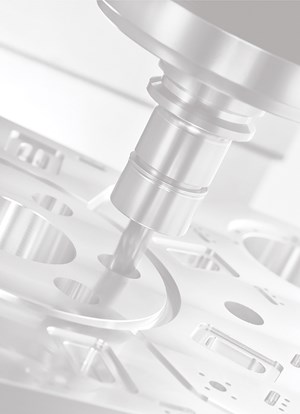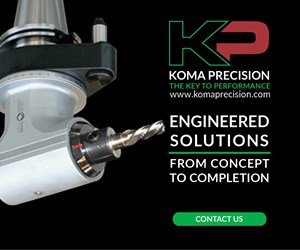Video: 5 Questions about Automation in Manufacturing
Productive uses of automation often involve people and technology working in parallel to complement one another.
Share



Video Transcription
What is Automation?
Automation in manufacturing is a means to keep the process meaning from step to step from cycle to cycle without a human being having to intervene. We hear automation and we think…robots? Manufacturers are using significantly more robots, but five axis machining is also automation. Also, bar feeds, indexers, software tools that streamline planning and programming are animation as well.
Is Automation replacing people?
Rarely would an employer say, “I can’t find someone to fill this job, therefore I’m going to automate”. One is not a replacement for the other. Manufacturers use automation to bridge gaps in which employees don’t produce. An example is a line or a cell that keeps on running into the night after the employees have gone home. Another is a highly repetitive automated process that keeps on running so that the employees can turn away from it, walk away from it here and there to tend to other tasks. The employer that learns to succeed with automation this way, using it to leverage what the employees can do, often is able to expand production without expanding staff. But, at the same time, many employers have added staff after automating because the multiplying effect of the automation makes each incremental employee that much valuable.
Is unattended production the only reason to use automation?
Beyond unattended production another reason to use automation is repeatability. A process that is more consistent from cut to cut or from piece to piece.
Another reason to automate, predictability. Know precisely how many parts you’re going to produce within a given period-of-time. Also, safety even comfort. Some operations, maybe some polishing or deburring operations are either hazardous enough or tedious enough that it’s difficult to have an employee do them.
Why are manufacturers adopting automation now?
The move to greater use of automation is one of the most important trends in shaping manufacturing. Today automation is accessible for two reasons. One, technology. Automated systems are easier to program, easier to install and use than every before. Two, manufacturers are ready for automation. An automated device needs a defined system to plug into. In the last generation or so manufacturers have made considerable advances at defining and structuring their processes. A process that is better understood is a better candidate for automation.
What is the future of automation?
The future is enterprise level automation. When you hear data driven manufacturing, Industry 4.0 that’s automation, but it’s not automation of moving parts or sequences of operations. Its automation of decisions related to scheduling, ordering, maintenance. We’re not there yet, but we’re getting better at data gathering. We’re getting better at sharing data across supply chains. Eventually, the promise of this is going to be processes and plants that are able to keep on producing effectively without waiting for human beings to make decisions even at some of the higher levels.
Learn More by visit the Robots & Automation Zone.
Related Content
Increasing Productivity with Digitalization and AI
Job shops are implementing automation and digitalization into workflows to eliminate set up time and increase repeatability in production.
Read MoreStuder's Automation, Entry-Level Solutions Take Center Stage
At its 2024 Music Motion Meeting, Studer AG showed off its entry-level line of grinding machines, as well as its newest universal loading system.
Read MoreAddressing Manufacturing Challenges with Automation
GrayMatter Robotics’ Physical AI robotic cells for manufacturing offer immediate impact and results.
Read MoreRevolutionizing Production: How Smart Hydraulics Drive 24/7 Manufacturing Excellence
All World Machinery Supply helps a firearms manufacturer up its game and improve and increase output.
Read MoreRead Next
OEM Tour Video: Lean Manufacturing for Measurement and Metrology
How can a facility that requires manual work for some long-standing parts be made more efficient? Join us as we look inside The L. S. Starrett Company’s headquarters in Athol, Massachusetts, and see how this long-established OEM is updating its processes.
Read More



















.jpg;maxWidth=300;quality=90)





.png;maxWidth=970;quality=90)